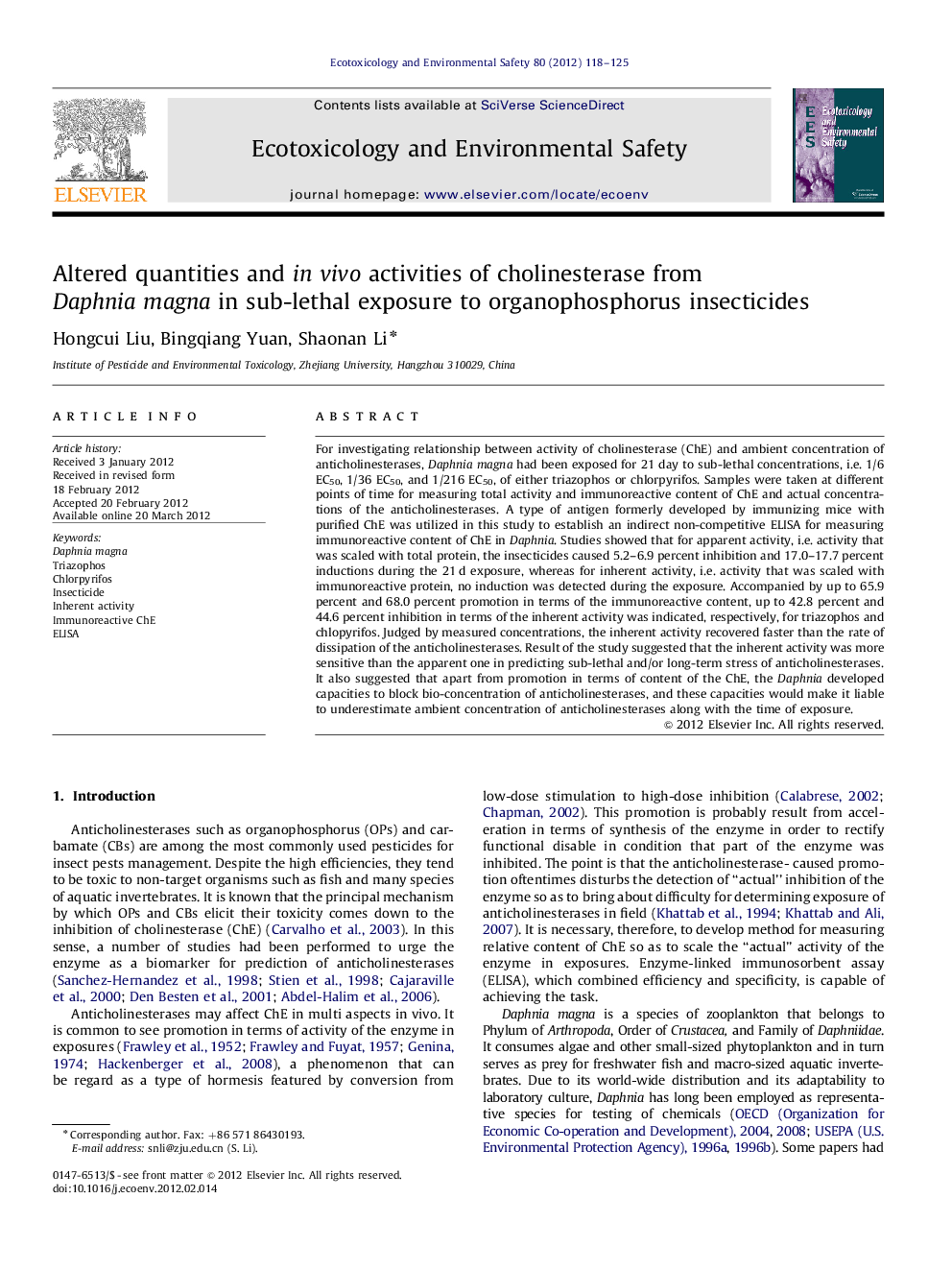| Article ID | Journal | Published Year | Pages | File Type |
|---|---|---|---|---|
| 4420671 | Ecotoxicology and Environmental Safety | 2012 | 8 Pages |
For investigating relationship between activity of cholinesterase (ChE) and ambient concentration of anticholinesterases, Daphnia magna had been exposed for 21 day to sub-lethal concentrations, i.e. 1/6 EC50, 1/36 EC50, and 1/216 EC50, of either triazophos or chlorpyrifos. Samples were taken at different points of time for measuring total activity and immunoreactive content of ChE and actual concentrations of the anticholinesterases. A type of antigen formerly developed by immunizing mice with purified ChE was utilized in this study to establish an indirect non-competitive ELISA for measuring immunoreactive content of ChE in Daphnia. Studies showed that for apparent activity, i.e. activity that was scaled with total protein, the insecticides caused 5.2–6.9 percent inhibition and 17.0–17.7 percent inductions during the 21 d exposure, whereas for inherent activity, i.e. activity that was scaled with immunoreactive protein, no induction was detected during the exposure. Accompanied by up to 65.9 percent and 68.0 percent promotion in terms of the immunoreactive content, up to 42.8 percent and 44.6 percent inhibition in terms of the inherent activity was indicated, respectively, for triazophos and chlopyrifos. Judged by measured concentrations, the inherent activity recovered faster than the rate of dissipation of the anticholinesterases. Result of the study suggested that the inherent activity was more sensitive than the apparent one in predicting sub-lethal and/or long-term stress of anticholinesterases. It also suggested that apart from promotion in terms of content of the ChE, the Daphnia developed capacities to block bio-concentration of anticholinesterases, and these capacities would make it liable to underestimate ambient concentration of anticholinesterases along with the time of exposure.
► ChE-derived antigen was utilized to measure content of ChE in Daphnia. ► Up to 68.0 percent promotion in content of ChE was found in long-term exposure to OPs. ► Inherent activity was more sensitive in detection of long-term stress of OPs. ► Inherent activity recovered faster than the rate of dissipation of OPs.
